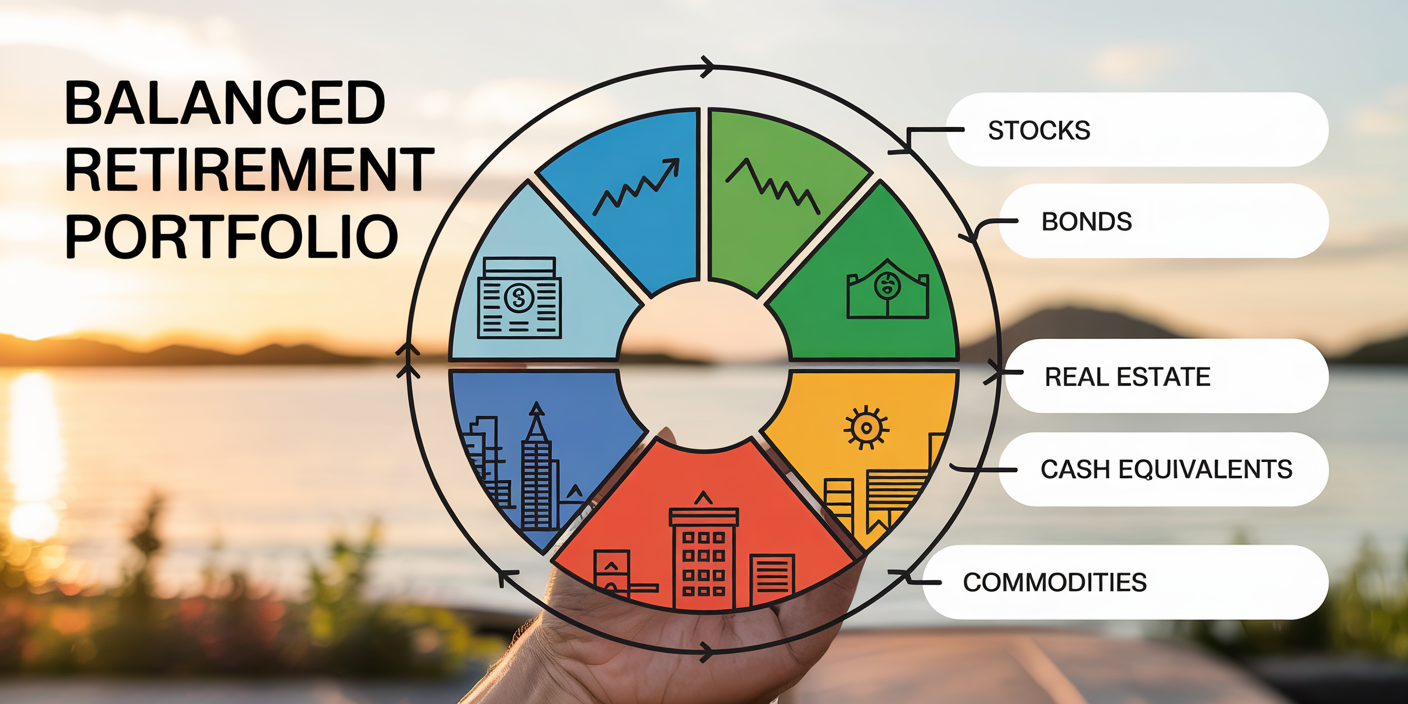Step-by-step Guide to Early Retirement Planning (FIRE Movement)
Anúncios
Early retirement has transformed from a distant fantasy into an achievable goal for many individuals, thanks largely to the FIRE movement—Financial Independence, Retire Early. This lifestyle and financial strategy encourages aggressive saving and smart investing to reach financial independence at an age much earlier than traditional retirement norms. With the increasing cost of living and work-related stress, early retirement represents not just financial freedom but a pathway to a more fulfilling life. Understanding the mechanics and planning steps behind FIRE can make this ambitious goal more accessible.

The appeal of the FIRE movement lies in its challenge to conventional financial timelines. Instead of working for 40 or more years, adherents aim to retire in their 30s, 40s, or 50s, enabling a longer, self-directed phase of life. However, achieving this requires a solid plan built on disciplined saving, strategic investment, and lifestyle adjustments. This guide lays out a step-by-step approach to early retirement planning grounded in practical examples and supported by data to enhance understanding and execution.
Anúncios
Understanding the FIRE Movement: Goals and Mindset
Anúncios
The core idea behind FIRE is straightforward—accumulate enough wealth to cover living expenses indefinitely without needing a traditional job. Financial independence is usually defined by reaching a savings level that can generate passive income equivalent to or greater than annual expenditure. Early retirees typically aim to save between 25 to 35 times their yearly expenses, following the 4% safe withdrawal rate principle popularized by the Trinity Study.
For example, if your annual expenses total $40,000, you would need roughly $1 million to retire early safely ($40,000 × 25 = $1,000,000). The shift in mindset required for FIRE involves prioritizing saving over immediate spending, living below one’s means, and viewing work as a means to an end rather than a lifelong obligation.
According to the 2023 survey by GoBankingRates, nearly 60% of Americans would like to retire before 60, with 15% aiming for retirement by the age of 50. Yet, only 20% report having a specific plan in place—highlighting the gap between aspiration and practice. This section sets the stage for understanding how systematic steps can bridge that gap.
Step 1: Assessing Your Current Financial Situation
Before embarking on early retirement, a clear understanding of where you stand financially is essential. This assessment involves calculating your net worth, tracking monthly income and expenses, and identifying debt levels. Net worth is derived from the sum of all assets minus liabilities and provides a snapshot of your financial health. Tools like Personal Capital or Mint offer user-friendly platforms for monitoring these metrics.
Create a detailed budget that categorizes spending, highlighting non-essential expenses that can be reduced or eliminated. For instance, consider the case of Sarah, a 34-year-old software engineer based in Seattle. By analyzing her expenses, Sarah discovered she spent $600 monthly on dining out, which she reduced to $200, freeing $400 per month for increased savings.
Understanding your spending habits also helps in estimating your annual expenses in retirement—one of the most critical inputs in calculating your FIRE number. It is advisable to use conservative estimates to allow a buffer for unexpected costs.
Step 2: Setting Clear and Realistic Financial Goals
Goal-setting is the cornerstone of any successful FIRE plan. Start by defining your target retirement age and desired lifestyle. Would you downsize your home, relocate to a lower-cost area, or maintain current living standards? Each choice significantly affects the amount you need to save.
Consider the differences between two professionals, John and Emma, both 30 years old, planning to retire at 50. John plans to maintain his $70,000 annual lifestyle in his current city, while Emma aims to move to a retirement-friendly town with low living costs, requiring only $45,000 annually. Using the typical 25× multiplier, John’s FIRE number is $1.75 million, whereas Emma’s goal is roughly $1.125 million—highlighting how lifestyle choices impact retirement targets.

Breaking down these goals into smaller milestones for every 5 years helps maintain motivation and track progress effectively. Further, automating savings and investments towards these goals reduces the risk of deviation from plans.
Step 3: Maximizing Income Streams and Cutting Costs
Achieving FIRE faster largely depends on optimizing income and minimizing expenses. Increasing income can come from side hustles, career advancement, freelancing, or passive income sources like rental properties and dividend stocks. For example, Mr. Patel, a marketing manager, doubled his savings rate by launching an online course in digital marketing, generating an additional $2,000 per month.
On the expenses side, the 50/30/20 budgeting rule is a start, but FIRE adherents often push savings rates well beyond 50%, with some achieving 70% or more of their income saved annually. This might involve measures like living in smaller homes, using public transportation, avoiding consumer debt, and embracing frugality without sacrificing quality of life.
| Expense Category | Average American Spending (%) | Typical FIRE Saver Spending (%) |
|---|---|---|
| Housing | 30 | 15 |
| Transportation | 15 | 5 |
| Food | 13 | 7 |
| Entertainment | 6 | 2 |
| Savings/Investments | 8 | 60+ |
(Source: U.S. Bureau of Labor Statistics, FIRE movement personal finance blogs)
By systematically reviewing and adjusting spending and income, you can substantially speed up your journey to financial independence.
Step 4: Building a Robust Investment Portfolio
Investing intelligently is crucial to growing wealth for early retirement. The FIRE community predominantly favors low-cost, diversified index funds, such as those tracking the S&P 500, given their strong historical performance and low fees. Data from Vanguard shows that the average annual return of the S&P 500 over the last 40 years has been approximately 10%, making it an efficient vehicle for long-term growth.
Real estate investment can also be a powerful part of the portfolio, providing passive rental income and potential appreciation. Notably, many FIRE practitioners combine stock market investing with rental properties to balance risk and generate steady cash flow.
Consider the example of a couple, Lisa and Mark, in their early 40s with a $500,000 portfolio invested 80% in stock index funds and 20% in single-family rental homes. Their diversified portfolio allows growth while rental income covers part of their annual expenses, reducing withdrawal rates needed from investments.

Regular portfolio rebalancing and tax-efficient investing through accounts such as Roth IRAs or 401(k)s can significantly impact long-term financial outcomes. In particular, Roth accounts provide tax-free withdrawals after retirement, an advantage for early retirees.
Step 5: Planning for Healthcare and Unexpected Expenses
Healthcare is often cited as one of the biggest roadblocks to early retirement, especially in countries without universal coverage. Early retirees often face a coverage gap before becoming eligible for Medicare (in the U.S.), making private insurance or healthcare sharing ministries essential.
According to a 2022 study by Fidelity, healthcare costs for a 65-year-old retired couple are projected to average around $315,000 over retirement. Planning ahead by setting aside health savings accounts (HSAs), exploring affordable insurance plans, or factoring higher insurance premiums into the budget is vital.
Moreover, building an emergency fund beyond retirement savings safeguards financial independence against unforeseen expenses such as home repairs, medical emergencies, or temporary income loss. Emergency funds covering six months of living expenses are standard; for early retirees, aiming for nine to twelve months is prudent.
Envisioning the Future: Trends and Innovations in Early Retirement Planning
The FIRE movement continues to evolve in response to economic, social, and technological changes. Recent trends suggest more people adopting hybrid FIRE models, such as “Fat FIRE” (higher spending targets) and “Lean FIRE” (minimalist living), reflecting personalized approaches to financial independence.
Technological advances in robo-advisors and AI-driven financial planning tools are making investment management easier and more accessible. Additionally, the rise of decentralized finance (DeFi) and cryptocurrency opportunities presents new dimensions to diversify investments but also carries higher risks, underscoring the need for education and caution.
Moreover, demographic shifts, including longer life expectancy and potential changes in Social Security or pension structures, mean early retirement strategies must adapt for sustainability. Planning for flexibility—considering part-time work or phased retirement options—might become increasingly common.
For example, a 2024 study by the National Bureau of Economic Research projects that people retiring today could live 7-10 years longer than retirees in the 1980s, emphasizing the need for larger retirement savings or supplemental income plans.
Ultimately, the future of early retirement planning will blend disciplined financial management with adaptability to personal goals and broader economic realities, empowering individuals to shape their ideal lives beyond traditional work.



Post Comment